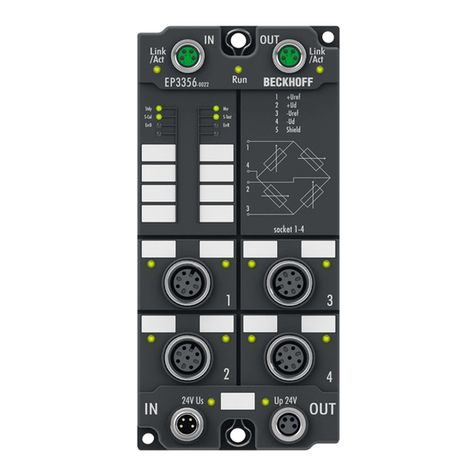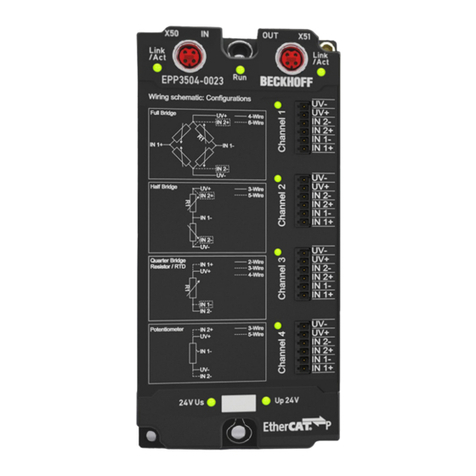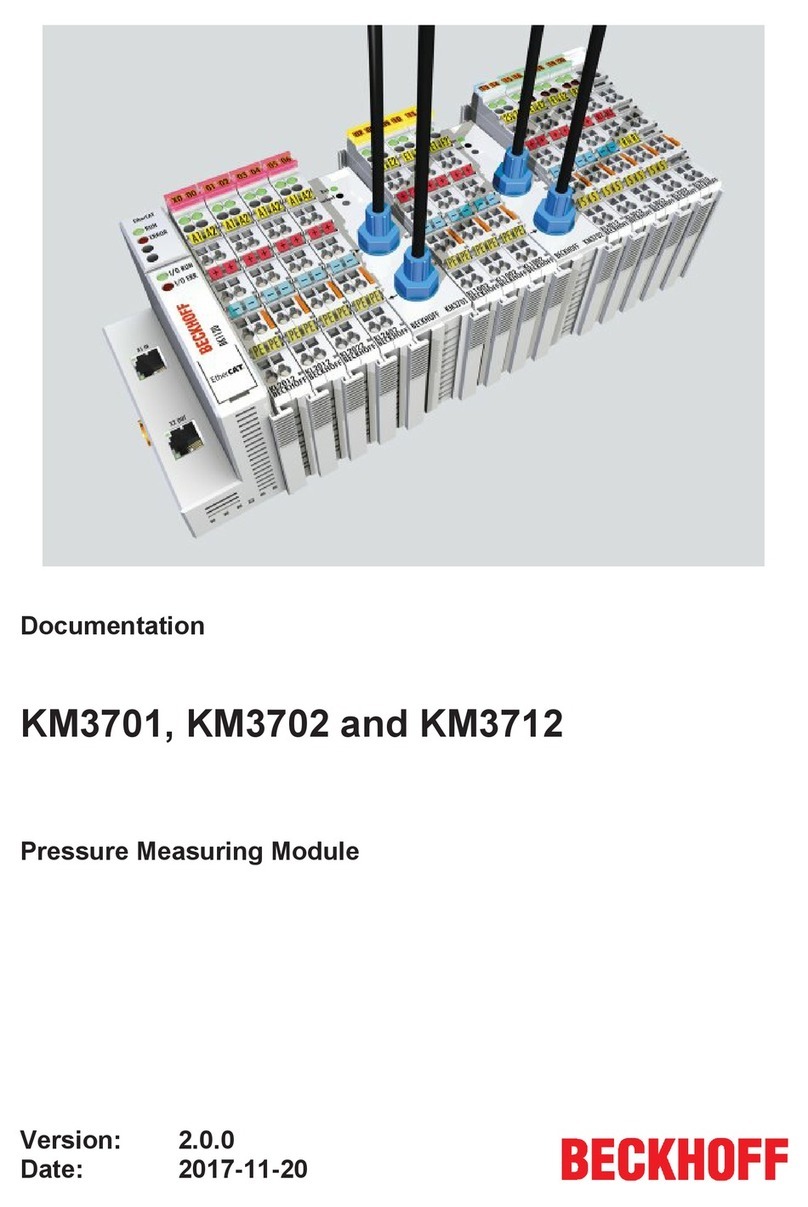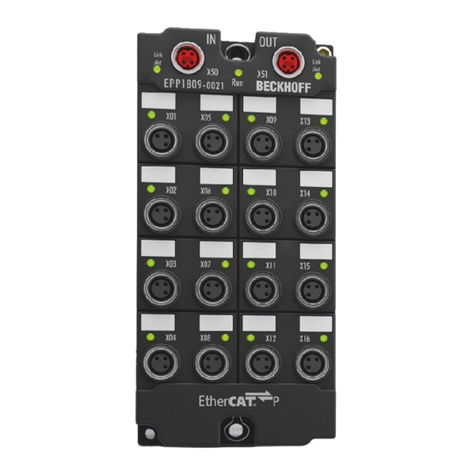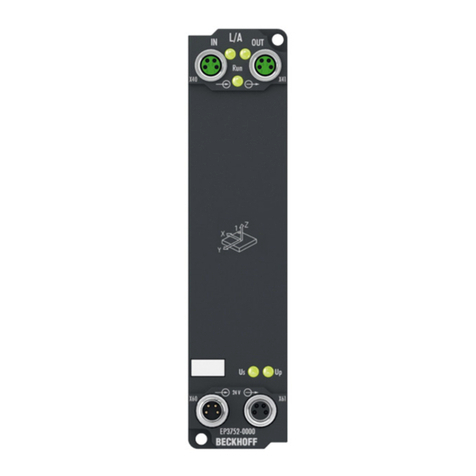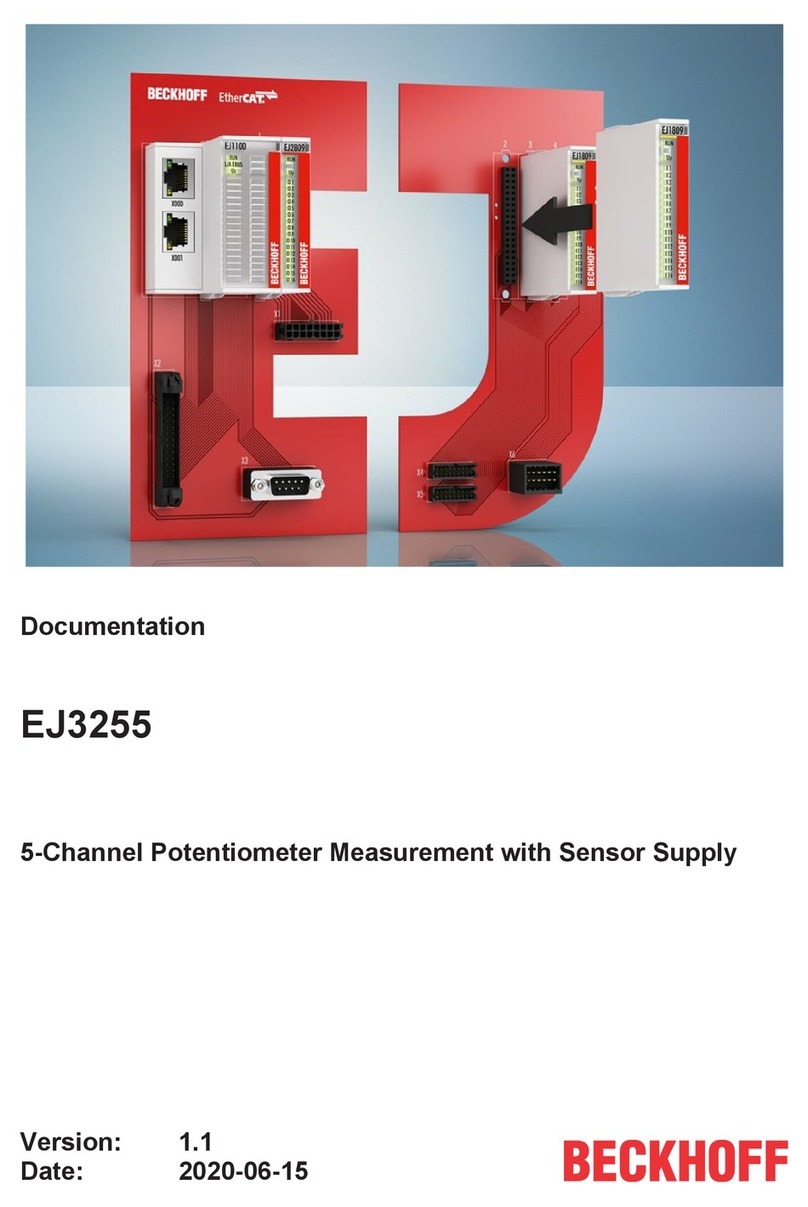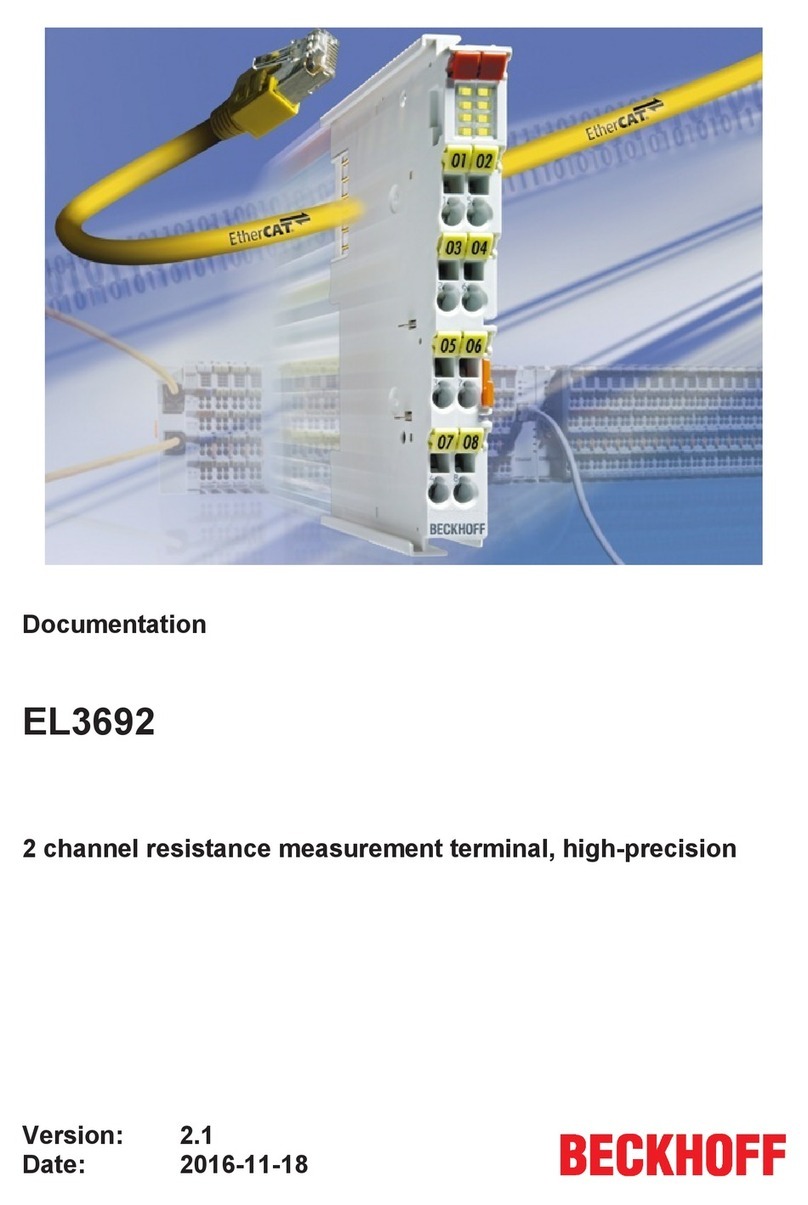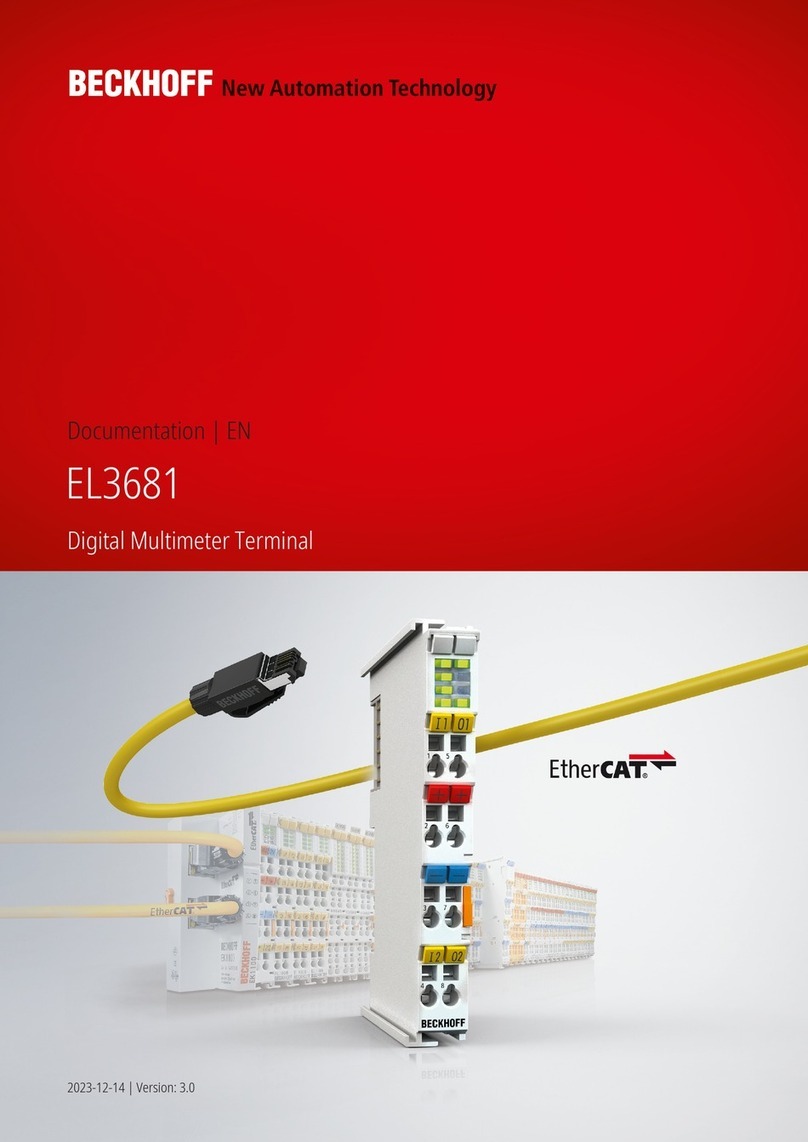
Table of contents
EP3751-0160 3Version: 1.0
Table of contents
1 Foreword....................................................................................................................................................5
1.1 Notes on the documentation .............................................................................................................5
1.2 Safety instructions.............................................................................................................................6
1.3 Documentation issue status ..............................................................................................................7
2 EtherCAT Box - Introduction....................................................................................................................8
3 Product overview ....................................................................................................................................10
3.1 Introduction .....................................................................................................................................10
3.2 Technical data.................................................................................................................................11
3.3 Scope of supply...............................................................................................................................12
3.4 Process image ................................................................................................................................13
3.4.1 Process data objects........................................................................................................13
4 Mounting and connection.......................................................................................................................15
4.1 Mounting .........................................................................................................................................15
4.1.1 Dimensions ......................................................................................................................15
4.1.2 Fixing................................................................................................................................16
4.1.3 Tightening torques for plug connectors............................................................................16
4.1.4 Functional earth (FE) .......................................................................................................16
4.2 Connection ......................................................................................................................................17
4.2.1 EtherCAT .........................................................................................................................17
4.2.2 Supply voltages................................................................................................................19
4.3 Function test....................................................................................................................................22
4.4 UL Requirements ............................................................................................................................23
4.5 Disposal ..........................................................................................................................................24
5 Commissioning and configuration........................................................................................................25
5.1 Integrating into a TwinCAT project..................................................................................................25
5.2 Acceleration measurement .............................................................................................................26
5.2.1 Measuring range ..............................................................................................................27
5.2.2 Measured value resolution...............................................................................................28
5.2.3 Sampling rate...................................................................................................................29
5.2.4 Measured value filter........................................................................................................30
5.2.5 Measured value noise......................................................................................................32
5.2.6 Status display...................................................................................................................33
5.2.7 Self test ............................................................................................................................34
5.3 Inclination measurement .................................................................................................................35
5.4 Distributed Clocks ...........................................................................................................................37
5.5 Controlling LEDs .............................................................................................................................38
5.6 Restore the delivery state ...............................................................................................................39
5.7 Decommissioning............................................................................................................................40
6 CoE objects .............................................................................................................................................41
6.1 Objects for parameterization ...........................................................................................................41
6.2 Standard objects .............................................................................................................................43
6.3 Profile-specific objects ....................................................................................................................49
7 Appendix..................................................................................................................................................51
